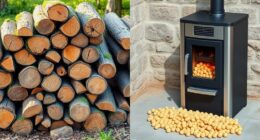
I’ve always found myself intrigued by the role that a baffle plays in a wood stove. It’s fascinating how this simple component can greatly improve the heating efficiency.
In this article, we’ll delve into the purpose and design of a wood stove baffle, explore the different types, and learn how to properly maintain and clean it.
By understanding how a baffle functions, we can make our wood stoves more efficient and enjoy a cozy, warm home.
Let’s dive in and uncover the secrets of the wood stove baffle.

Key Takeaways
- A baffle in a wood stove reduces smoke emissions and improves overall efficiency.
- The design and function of a wood stove baffle, including the choice of materials, shape, and size, greatly impact its performance.
- A baffle improves heating efficiency by directing air towards the firebox, maximizing heat transfer, minimizing heat loss, and creating a longer path for hot gases.
- Different types of baffles, such as firebox baffles, secondary combustion baffles, heat exchange baffles, and insulating baffles, each serve a specific function in optimizing heat distribution and combustion control in wood stoves.
The Purpose of a Baffle in a Wood Stove
I’ll explain the purpose of a baffle in a wood stove.
A baffle is a crucial component of a wood stove that plays a significant role in reducing smoke emissions and improving the overall efficiency of the stove.
The primary benefit of using a baffle is that it helps to create a longer and hotter path for the smoke to travel within the stove.
This extended path allows for more complete combustion of the wood, resulting in a cleaner and more efficient burn.
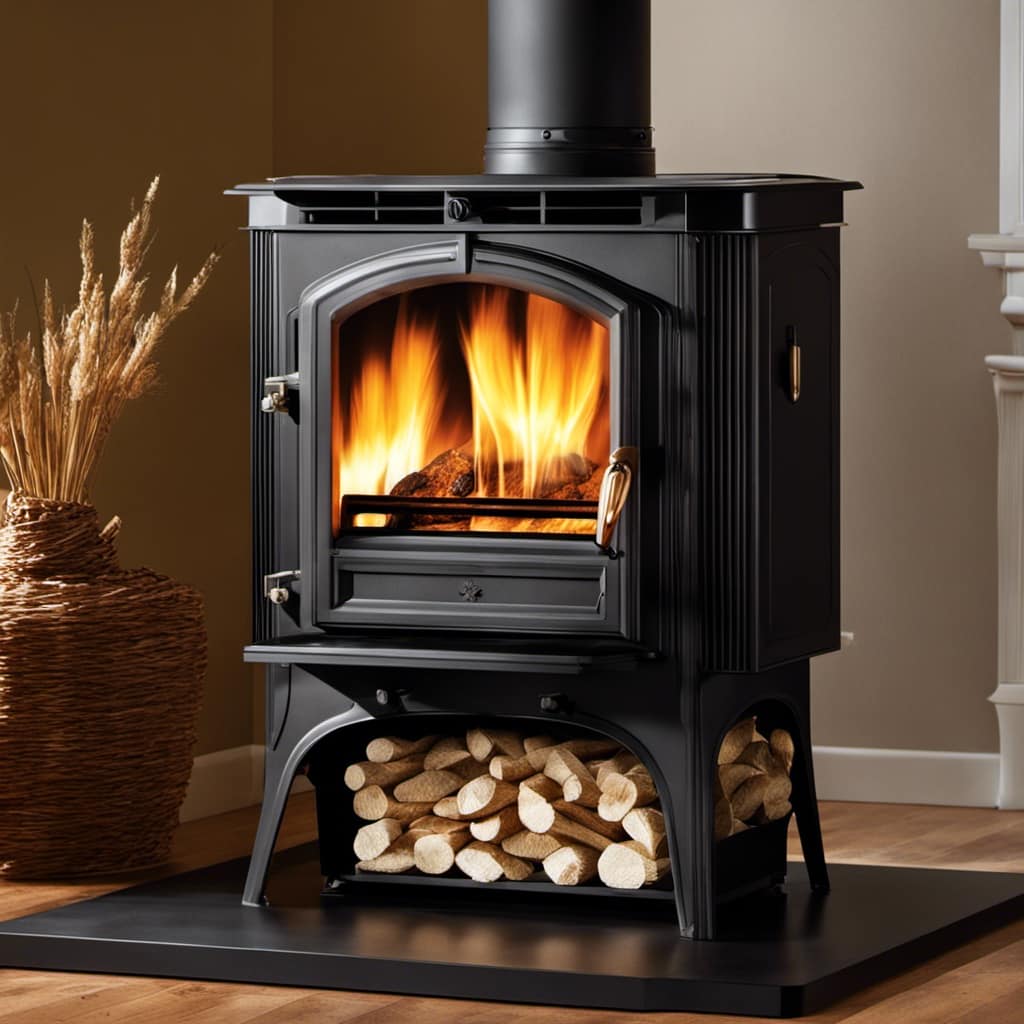
By redirecting the flow of smoke and gases, the baffle also helps to extract maximum heat from the firebox before it escapes through the chimney.
Understanding the design of a wood stove baffle is essential in maximizing the performance and minimizing environmental impact.
Understanding the Design of a Wood Stove Baffle
One key aspect of understanding the design of a wood stove baffle is recognizing the importance of its position within the stove. The baffle is a crucial component that affects the overall performance and efficiency of the stove.
Here are four important considerations regarding wood stove baffles:

Baffle materials: The choice of materials used for the baffle can greatly impact the stove’s performance. Materials such as cast iron or steel are commonly used due to their durability and ability to withstand high temperatures.
Air flow: Baffles are strategically designed to control the flow of air within the stove. They help to direct the air towards the firebox, ensuring efficient combustion and minimizing heat loss.
Baffle shape and size: The shape and size of the baffle play a significant role in determining the heat transfer efficiency. Properly designed baffles maximize heat exchange while minimizing the escape of hot gases.
Baffle insulation: Insulating the baffle can enhance its performance by preventing excessive heat loss. Insulated baffles help to keep the heat inside the stove, allowing for a more efficient and effective heating process.
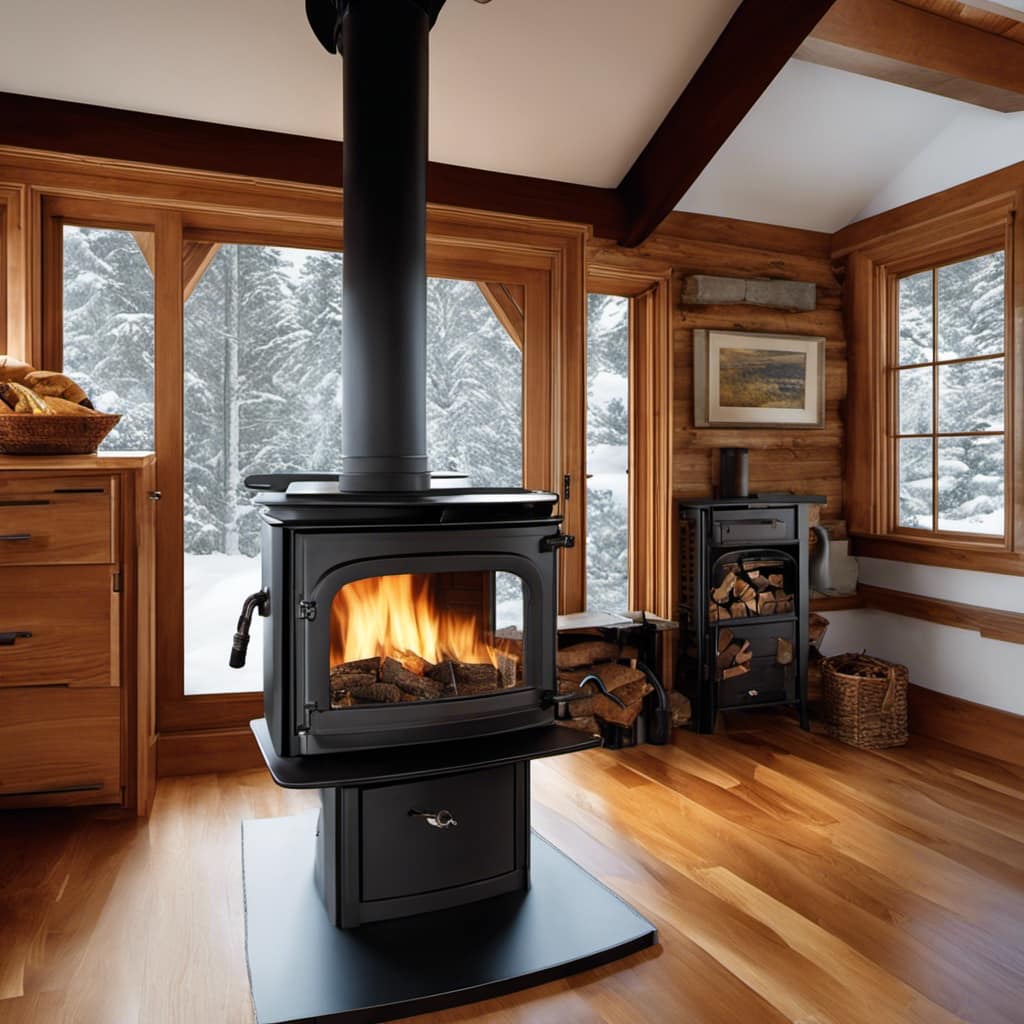
Understanding these aspects of wood stove baffles is crucial to comprehending how they improve heating efficiency.
How Does a Baffle Improve Heating Efficiency in a Wood Stove
The baffle in a wood stove improves heating efficiency by directing the flow of air towards the firebox, maximizing heat transfer and minimizing heat loss. By strategically placing the baffle, the stove can effectively control the combustion process and ensure that the generated heat is efficiently distributed throughout the room.
One of the key advantages of using a baffle in wood stoves is that it creates a longer path for the hot gases to travel, allowing more heat to be extracted from them before they’re expelled through the chimney. Additionally, a properly positioned baffle can also help to reduce the amount of smoke and particulate matter that’s released into the environment.
Understanding the impact of baffle placement on wood stove heating efficiency is crucial for achieving optimal performance and maximizing heat output. Now, let’s explore the different types of baffles and their function in wood stoves.
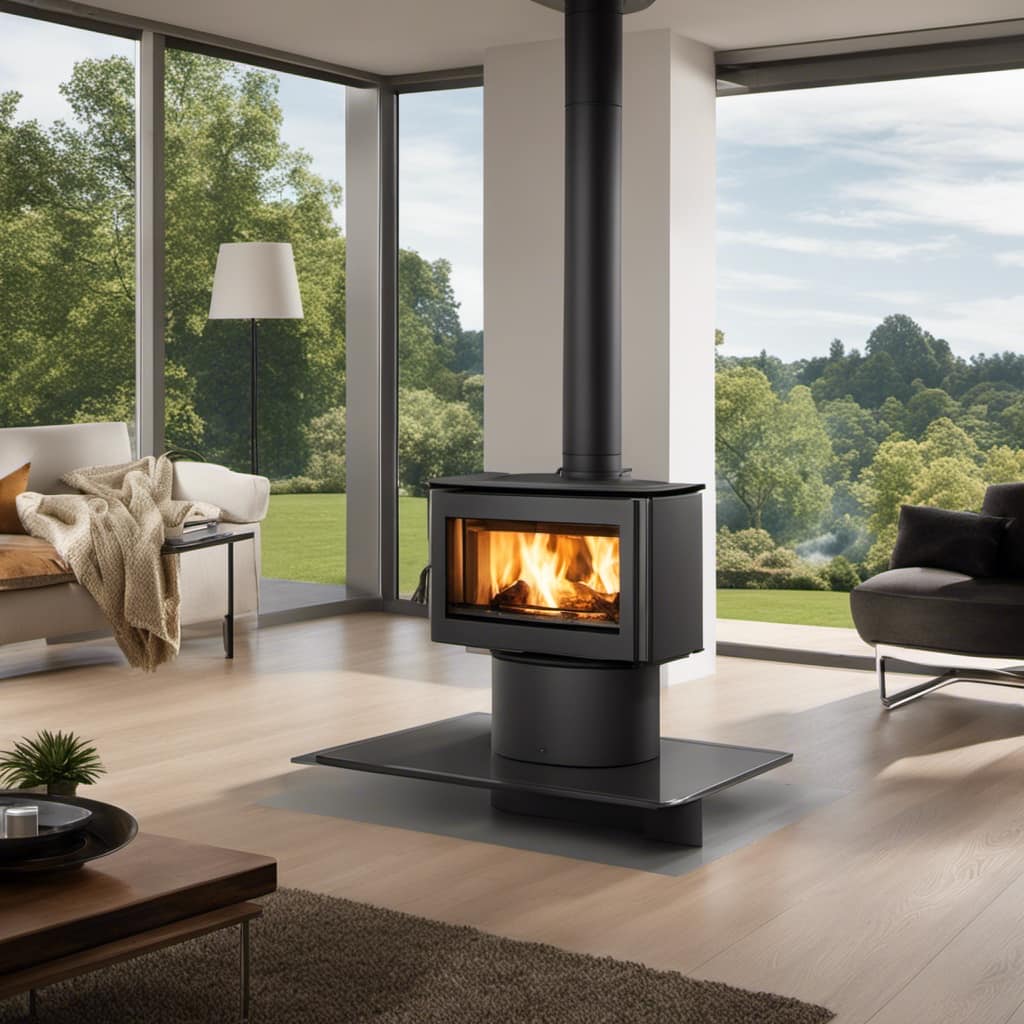
Different Types of Baffles and Their Function in Wood Stoves
Exploring the various types of baffles and their functions in wood stoves, I’m fascinated by how they contribute to better heat distribution and combustion control. Baffles are an essential component of a wood stove, designed to optimize the efficiency of heat transfer and ensure complete combustion.
Here are four types of baffles commonly used in wood stoves and their functions:
Firebox Baffles: These baffles are located at the top of the firebox and help to direct the flow of hot gases towards the flue. They enhance heat transfer by forcing the gases to circulate around the firebox, maximizing contact with the stove’s surfaces.
Secondary Combustion Baffles: These baffles are positioned above the firebox and promote secondary combustion by creating a longer and hotter path for the exhaust gases. They also help to reduce the emission of pollutants by ensuring thorough combustion of the gases.
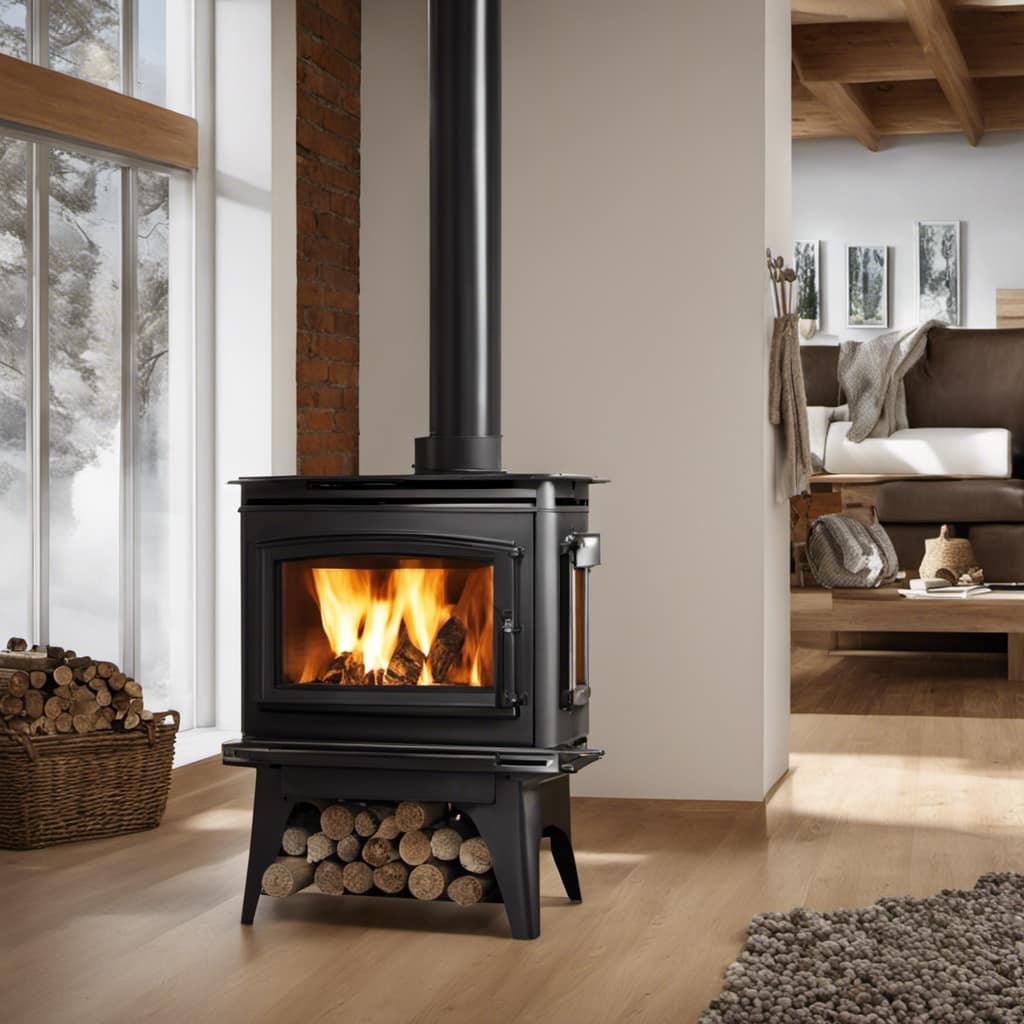
Heat Exchange Baffles: These baffles are strategically placed inside the stove to increase the surface area available for heat exchange. They efficiently transfer heat from the combustion chamber to the surrounding air, resulting in improved heat distribution throughout the room.
Insulating Baffles: Made from high-temperature resistant materials, such as ceramics or vermiculite, these baffles serve as insulation barriers. They prevent excessive heat from escaping through the stove’s body, directing it towards the flue and increasing the overall heat output.
Does Cleaning the Baffle in a Wood Stove Affect Its Functionality?
Cleaning the wood stove baffle is essential for maintaining its functionality. Over time, the baffle can become clogged with soot and debris, affecting airflow and heat distribution. Regular cleaning ensures efficient burning and prevents potential damage to the stove. A clean baffle is crucial for optimal wood stove performance.
Tips for Maintaining and Cleaning a Wood Stove Baffle
I’ve found that regular cleaning and maintenance of my wood stove’s baffle is crucial for optimal performance and efficiency. The baffle plays a vital role in directing the flow of combustion gases, allowing for a more efficient burn and heat distribution. Over time, however, the baffle can accumulate a buildup of soot, creosote, and other residues, which can hinder its effectiveness. To ensure the longevity of the baffle and maintain its efficiency, it is necessary to remove this buildup periodically. This can be done by carefully removing the baffle and using a brush or scraper to clean off the deposits. By maintaining the cleanliness of the baffle, you can ensure the proper functioning of your wood stove and maximize its heating capabilities.
| Benefits of Maintaining Baffle Longevity | Steps for Removing Baffle Buildup |
|---|---|
| Increased heat efficiency | 1. Allow the stove to cool down completely |
| Longer lifespan of the baffle | 2. Carefully remove the baffle from the stove |
| Improved air flow | 3. Use a brush or scraper to gently remove the buildup |
| Reduced risk of chimney fires | 4. Dispose of the removed residues properly |
Frequently Asked Questions
How Often Should I Replace My Wood Stove Baffle?
I replace my wood stove baffle when signs of wear or damage become apparent. Regular maintenance is crucial to ensure proper function. Signs of a worn-out baffle include decreased heat output and increased smoke production.
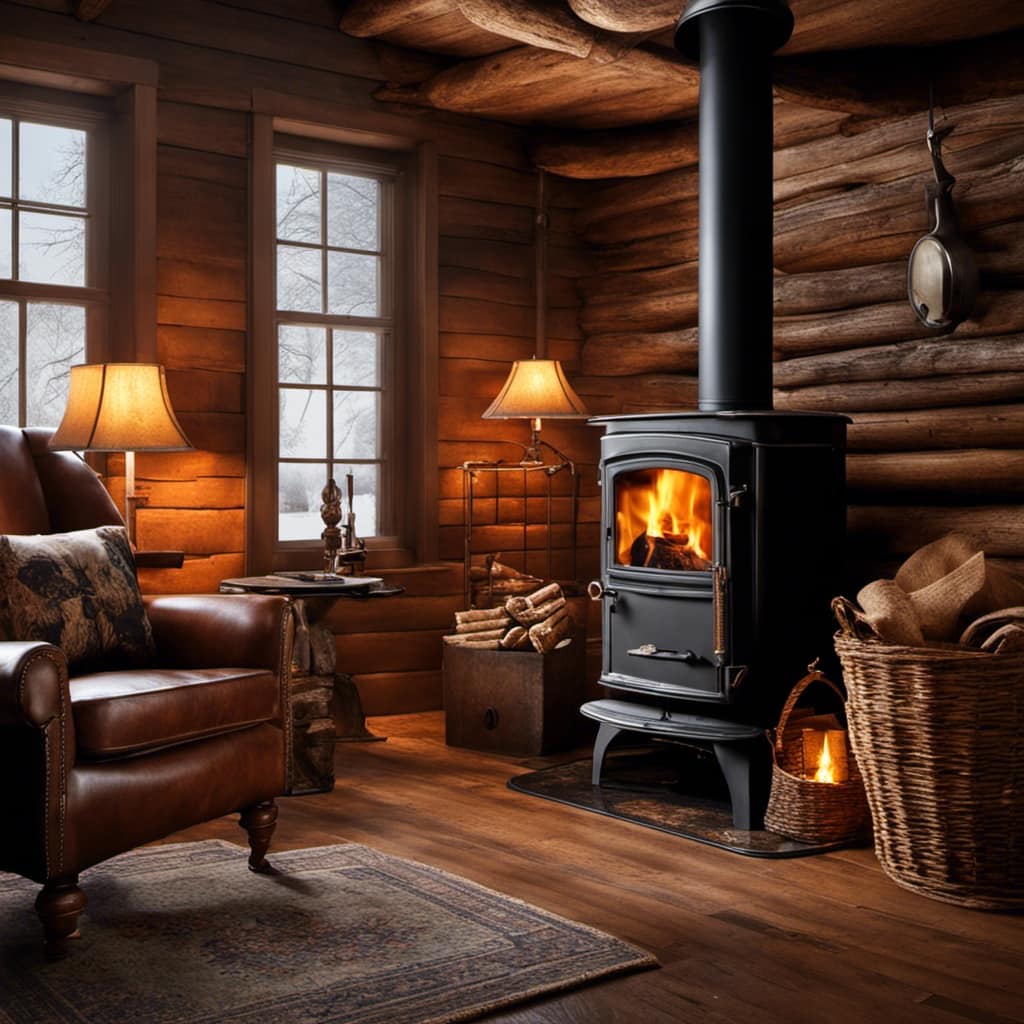
Can I Use My Wood Stove Without a Baffle?
I wouldn’t recommend using a wood stove without a baffle. Not only does it affect the efficiency of the stove, but it can also lead to increased creosote buildup and decreased heat output. Proper wood stove maintenance includes using a baffle for optimal performance.
Can I Modify My Wood Stove Baffle to Increase Its Efficiency?
I can modify my wood stove baffle to increase its efficiency. Proper wood stove baffle maintenance is crucial as it enhances the performance of the stove by directing heat and improving combustion.
What Are the Signs That My Wood Stove Baffle Needs to Be Cleaned?
When my wood stove baffle gets clogged, it’s like a traffic jam in my chimney. To avoid this, I clean it regularly. Signs of a clogged baffle include reduced heat output and increased smoke. Regular maintenance is crucial for optimal stove performance.
Are There Any Safety Concerns Associated With Wood Stove Baffles?
There are potential dangers associated with a damaged wood stove baffle. Regular wood stove baffle maintenance is crucial to ensure proper functioning and minimize risks such as overheating and chimney fires.
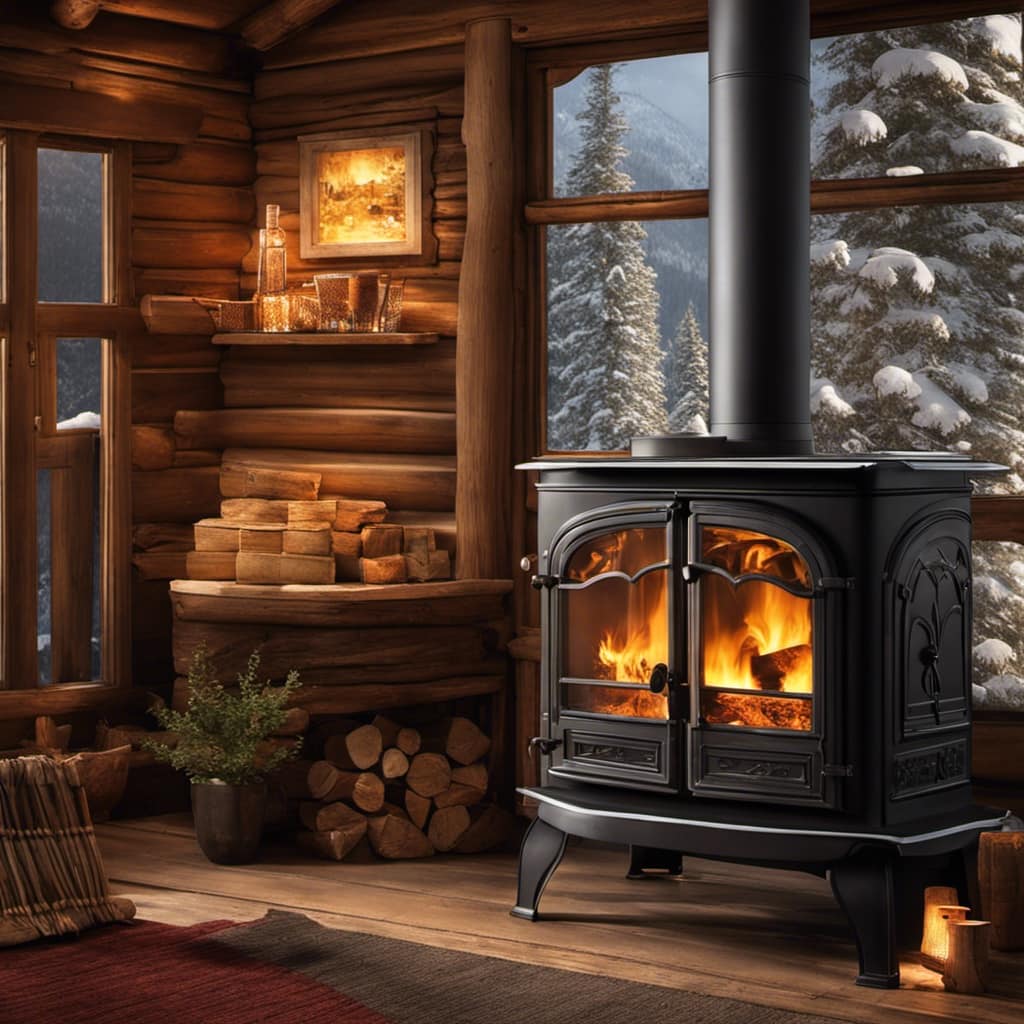
Conclusion
In conclusion, the baffle in a wood stove plays a crucial role in improving heating efficiency. By directing the flow of gases and increasing the surface area for heat transfer, the baffle helps to extract maximum heat from the burning wood.
The different types of baffles available offer various functions, allowing for customization based on individual needs.
Regular maintenance and cleaning of the baffle are essential to ensure optimal performance and longevity.
So, remember to take care of your wood stove baffle and enjoy its efficient heating capabilities.
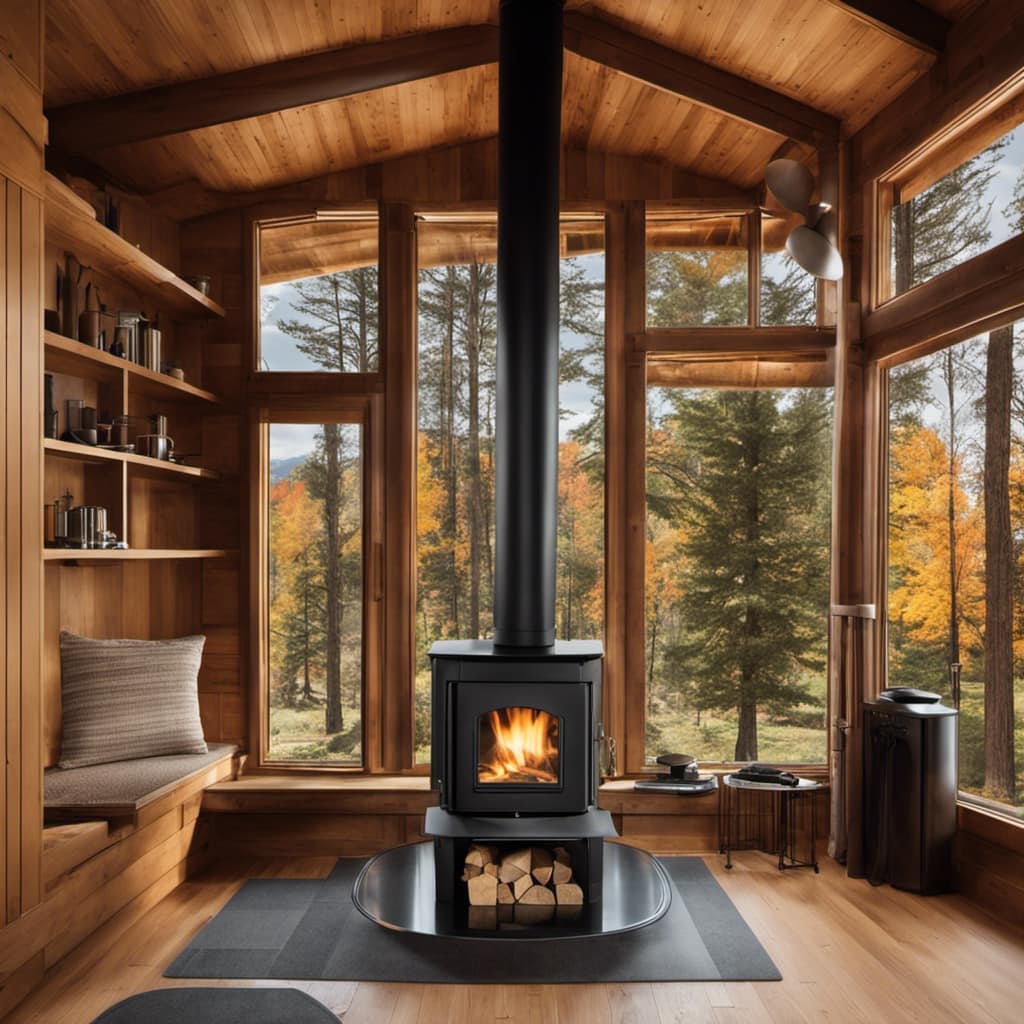
Growing up surrounded by the vast beauty of nature, Sierra was always drawn to the call of the wild. While others sought the comfort of the familiar, she ventured out, embracing the unpredictable and finding stories in the heartbeat of nature.
At the epicenter of every remarkable venture lies a dynamic team—a fusion of diverse talents, visions, and passions. The essence of Best Small Wood Stoves is crafted and refined by such a trio: Sierra, Logan, and Terra. Their collective expertise has transformed the platform into a leading authority on small wood stoves, radiating warmth and knowledge in equal measure.








